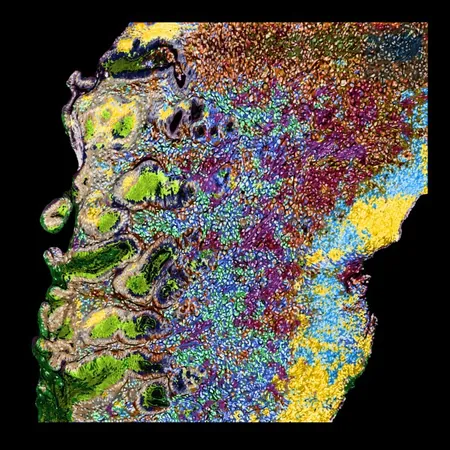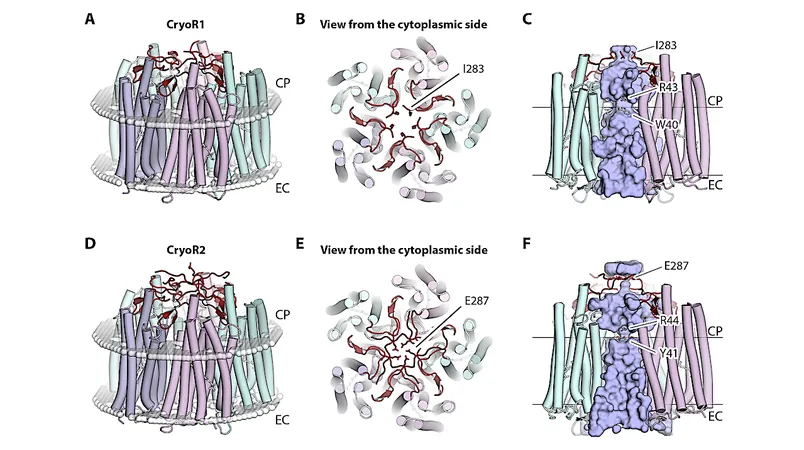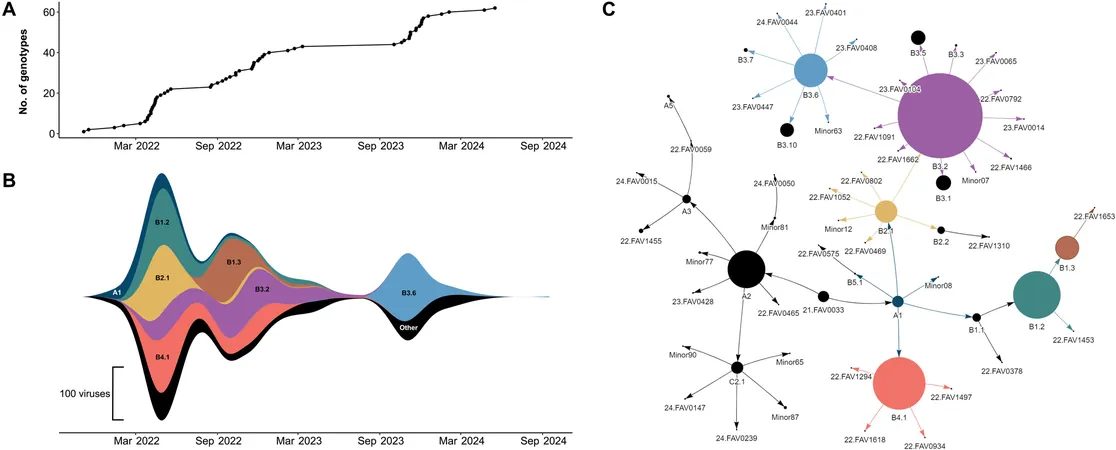
Revolutionary Barcode Technology Set to Transform Cancer Diagnosis
2024-09-30
Author: Sarah
Revolutionary Barcode Technology Set to Transform Cancer Diagnosis
In a groundbreaking innovation, researchers at Yale University have developed a novel pathology tool known as Patho-DBiT (pathology-compatible deterministic barcoding in tissue) that harnesses advanced barcode technology, promising to revolutionize the way cancer is diagnosed. This significant development was outlined in a study published on September 30, 2023, in the prestigious journal Cell.
Dr. Mina Xu, a prominent member of the Yale Cancer Center and a professor of pathology at Yale School of Medicine, expressed immense enthusiasm about the potential of this new tool. 'As a physician who specializes in diagnosing cancer, I was astounded by the depth of insight provided by Patho-DBiT. This technology is set to exponentially enhance our understanding of tumor biology, allowing for more precise and actionable cancer diagnoses,' stated Xu.
The Patho-DBiT tool employs DNA barcoding technology to map the spatial relationships of RNA molecules and proteins within tissue samples. This capability is crucial as certain types of RNA play regulatory roles in cancer progression. What sets Patho-DBiT apart is its use of microfluidic devices that deliver barcodes from two different directions, creating a unique two-dimensional 'mosaic' of pixels. This intricate mapping provides spatial data that can be pivotal in tailoring targeted therapies for individual patients. The technology originated from the lab of Yale’s Rong Fan and is currently licensed to AtlasXomics, a Yale spin-out company.
Dr. Rong Fan, the senior author of the study and a professor of biomedical engineering and pathology, emphasized the tool's transformative potential: 'For the first time, we have the ability to directly visualize diverse RNA species, their locations, and functions within clinical tissue samples. This technology enables us to unravel the complex biological narratives of RNA molecules, which far exceeds simply determining gene expression. I believe it will revolutionize our approach to human biology in the coming years.'
The study's authors pointed out that Patho-DBiT could unlock an immense reservoir of information contained within archived laboratory tissue biopsy samples. As noted by Zhiliang Bai, the lead author and a postdoctoral associate in Fan's lab, 'There are millions of archived tissues that have been retained over the years, yet until now, we lacked effective tools for spatial-level investigation. Traditional methods often fail to capture critical information due to the fragmented nature of RNA molecules in these tissues. This is precisely why we are so excited about Patho-DBiT.'
Looking ahead, the potential applications for Patho-DBiT are promising. Researchers foresee its use not only in developing targeted therapies but also in investigating how low-grade tumors progress to more aggressive forms, paving the way for potential preventative measures. However, for Patho-DBiT to be incorporated into routine pathology diagnostics, additional validation studies using patient samples are essential.
This multidisciplinary research effort brought together experts from various Yale departments, including biomedical engineering, pathology, and genetics. Notable co-author Jun Lu, an associate professor in the Department of Genetics, highlighted another exciting aspect of Patho-DBiT: its capability to generate spatial maps of noncoding RNA expression. Noncoding RNAs, once deemed insignificant 'junk DNA,' are now recognized as critical players in biological processes and diseases such as cancer.
The groundbreaking study received funding support from the National Institutes of Health (NIH), underscoring the importance of this research in advancing cancer diagnostics and treatments.
Stay tuned, as the future of cancer diagnosis looks brighter than ever with this cutting-edge technology emerging from Yale!



 Brasil (PT)
Brasil (PT)
 Canada (EN)
Canada (EN)
 Chile (ES)
Chile (ES)
 Česko (CS)
Česko (CS)
 대한민국 (KO)
대한민국 (KO)
 España (ES)
España (ES)
 France (FR)
France (FR)
 Hong Kong (EN)
Hong Kong (EN)
 Italia (IT)
Italia (IT)
 日本 (JA)
日本 (JA)
 Magyarország (HU)
Magyarország (HU)
 Norge (NO)
Norge (NO)
 Polska (PL)
Polska (PL)
 Schweiz (DE)
Schweiz (DE)
 Singapore (EN)
Singapore (EN)
 Sverige (SV)
Sverige (SV)
 Suomi (FI)
Suomi (FI)
 Türkiye (TR)
Türkiye (TR)
 الإمارات العربية المتحدة (AR)
الإمارات العربية المتحدة (AR)